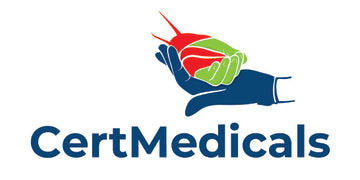Hyperbaric oxygen therapy is a non-invasive treatment that requires a patient to inhale or breathe in 100% pure oxygen at an increased atmospheric pressure within a full-body chamber.
Initially used for treating diving-related illnesses, hyperbaric oxygen has proven to boost the body’s natural healing process and is now utilized for treating wounds and several other conditions.
The first hyperbaric chamber was developed in the early 1600’s by a physician using bellows and valves. He believed that increased pressure could help with respiratory disorders.
How does it work?
Oxygen is essential for the human body to survive and thrive. Hyperbaric oxygen therapy entails supplying large concentrations of pure oxygen to the tissues, which helps promote faster healing and improved functioning.
How many sessions does a patient require?
Hyperbaric treatment patients typically require regular sessions, the duration, and frequency of which a doctor recommends, according to the severity of the ailment. While conditions like carbon mono-oxide poisoning can be treated in just a couple sittings, more severe conditions like non-healing wounds and tissue necrosis require 20 to 60 sessions.
The length of each session also varies from patient to patient but is usually somewhere between 30 minutes to 2 hours. It is mostly an outpatient procedure in which the patient sits or lies down within a sealed chamber with 100% oxygen. The oxygen pressure tends to be greater than that at sea level, which is three times the pressure that humans breathe on a regular basis. Patients are often made to listen to music, watch TV or even talk to a technician or therapist to ensure their relaxation during this period.
Types of Chambers:
Mono-place Chamber: Built to cater to only one patient at a time. The patient is made to slip into a long plastic tube similar to that of an MRI machine.
Multi-place Chamber: This is a large chamber, almost the size of a room and caters to two or more patients simultaneously. The patients breathe in oxygen through separate hoods or masks.
What conditions can it treat?
Be it the growth of tissues and cells or complex metabolic processes, all of our bodily functions require adequate oxygen to be carried out properly. Hyperbaric therapy is a natural, chemical-free way to increase the concentration of oxygen circulated by the blood.
As more oxygen reaches the injured and damaged tissues, their recovery speeds up. High blood oxygen levels promote healing as it helps the body fight infections, resist bacteria and produce growth factors or stem cells.
This therapy is used to treat a wide range of conditions, including but not limited to:
Non-Healing Wounds: An example of such a wound is gangrene and diabetic foot ulcers. It is caused by a severe bacterial infection that causes a decrease in blood supply to the body’s extremities like the hands and the feet and sometimes the internal organs, too. As a result of lack of blood and oxygen, the tissue within the region starts dying. With regular sessions of hyperbaric oxygen therapy, the blood flow can be restored, and the added amounts of oxygen help with new cellular and tissue development and speed up collagen formation.
Apart from the examples mentioned above, hyperbaric oxygen treatment has proven beneficial for other issues like carbon mono-oxide or cyanide poisoning, decompression sickness, compromised skin grafts and flaps, necrotizing soft tissue infection, radiation burns and, injuries as well as Actinomycosis.
Severe Anemia: An individual with this condition has drastically low quantities of RBCs. The drop in hemoglobin levels reduces the supply of oxygen throughout the body. Hyperbaric oxygen therapy can be used to bridge this gap and restore normal blood gas concentrations.
Brain Abscess: Often fatal, brain abscesses are pus-filled lesions in the brain caused by bacterial and fungal infections. It compromises the immune system and reduces the body’s ability to fight infections. Depending on the severity of the patient’s condition, they are either recommended surgery or given medication. Both these options have proven to be more effective, when coupled with hyperbaric oxygen, and give better results in the long run. Patients who had hyperbaric oxygen therapy sessions after surgery reportedly recovered faster and did not have any need for a re-operation.
Burns: Second and third-degree burns do not just affect the outer layer of the skin but also damage the underlying dermis, muscles, bone, and tendons. No sensation is felt in the region due to the extensive damage of nerve endings and blood vessels. By giving hyperbaric oxygen therapy to burn victims within the first 48-72 hours, their oxygen saturation can be increased by nearly 12 times. The higher levels of oxygen assist in repairing damaged regions and preventing necrosis of the tissues in the surrounding areas.
The treatment has numerous advantages. A few added benefits of this revolutionary procedure include:
- Supplies oxygen-rich plasma to tissues lacking oxygen
- Prevents reperfusion injury
- Prevents growth and development of bacterial or fungal infections by disabling the toxins that they produce
- Promotes the production of stem cells, new connective tissues, and collagen
- Strengthens white blood cells and improves their ability to combat foreign invaders
Time and time again, it has been proven that the field of hyperbaric medicine holds a lot of potential. However, this treatment isn’t something you should opt for on your own. Before choosing this option, it is recommended that you do your research and consult a professional regarding any potential risks involved.
You can always book a consultation and schedule an appointment with Dr. Judepatricks Onyema here at Certmedicals. With years of experience in the field of hyperbaric medicine, he can ensure that you receive the utmost care and attention and guide you in the right direction towards choosing a plan that can best cater to your specific needs.
